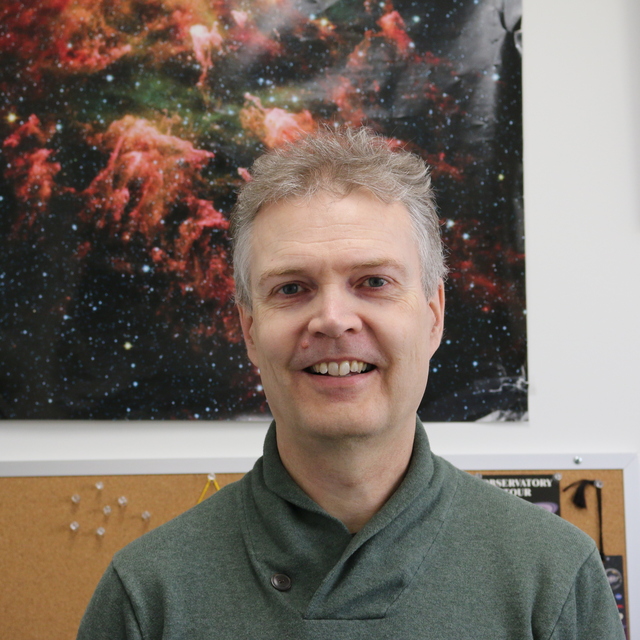February
2001
•
2001A&A...366..439K
Authors
•
Kotilainen, J. K.
•
Reunanen, J.
•
Laine, S.
•
Ryder, S. D.
Abstract
•
We present high spatial resolution ( ~ 0\farcs6) near-infrared broad-band JHK images and Brgamma 2.1661 mu m and H_2 1-0 S(1) 2.122 mu m emission line images of the nuclear regions in the interacting starburst galaxies NGC 520, NGC 1614 and NGC 7714. The near-infrared emission line and radio morphologies are in general agreement, although there are differences in details. In NGC 1614, we detect a nuclear double structure in \BG, in agreement with the radio double structure. We derive average extinctions of A_K = 0.41 and A_K = 0.18 toward the nuclear regions of NGC 1614 and NGC 7714, respectively. For NGC 520, the extinction is much higher, A_K = 1.2-1.6. The observed H_2/Brgamma ratios indicate that the main excitation mechanism of the molecular gas is fluorescence by intense UV radiation from clusters of hot young stars, while shock excitation can be ruled out. The starburst regions in all galaxies exhibit small Brgamma equivalent widths. Assuming a constant star formation model, even with a lowered upper mass cutoff of M_u = 30 M_sun, results in rather old ages (10-40 Myr), in disagreement with the clumpy near-infrared morphologies. We prefer a model of an instantaneous burst of star formation with M_u = 100 M_sun, occurring ~ 6-7 Myr ago, in agreement with previous determinations and with the detection of W-R features in NGC 1614 and NGC 7714. Finally, we note a possible systematic difference in the amount of hot molecular gas between starburst and Seyfert galaxies.
Links




